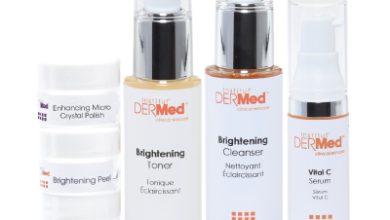Do Logo Designers Get Royalties?

Basically licensing is a legal agreement that you grant permission to a third party to use your intellectual property. Logo Designers
Licensing is regularly used for designs of products (such as giftware, homewares), surface/textile patterns, software, illustrations, or photographs.
In return, they can pay you a design fee. In this case, they are interested in paying you in royalties. which means that you get a percentage of their sales. So, if your range would do very well then you would get paid. (much) more than you would if you get a design fee only.
As this is a leading retailer that uses licensing regularly. I assume that they would have their own licensing contract with a pretty fixed royalty percentage in place. However, ALWAYS try to negotiate on their terms & conditions!
You normally would get a design brief to commission you to design the range. plus a licensing agreement that gives all the details of the arrangement.
Payment options for creative licensing projects
There are different ways that you can get paid for creative licensing commissions like this. You can negotiate what works best for you:
Commission only: You would get a design brief and get paid a fixed design fee. This is a safe option, as you will be paid regardless of the product ever going to market (which happens very frequently!). However, if the product would be a success you won’t get paid more money than if it would be a flop. Within specific industries, there are often more or less fixed rates for specific design jobs and I suggest you ask around to see if you can find out how much to charge as a design fee.
Royalties only: You will get paid a percentage of the sales, which makes this lucrative if you have the right manufacturer who can produce and market successful products. But it leaves a lot of financial risk with you as many designs will never reach the market while you have done lots of design work. Be especially very wary of startups offering you this as an option – they very rarely will have the capacity to bring a collection to market properly and therefore you will not be paid.
Advance against royalties: This combines the above two, whereby you get a lower fixed design fee than if you would do ‘commission only. but you also get a royalty once the product starts to sell well. Your royalty income will accumulate until they reach the level of the design fee, and only then will you get paid monthly or quarterly again but now in royalties. This gives you the security of at least being able to cover your costs but also allows for potentially higher returns if you design a commercially successful product.
How much money can I expect?
This question is basically impossible to answer … “How long is a piece of string?”
Most experienced brands and manufacturers in surface pattern, stationery, product design have a fixed fee for a design and that’s what they will offer. You can try to negotiate (always do!) but it’s a little bit of a given to be honest.
Very often there are more or less set % per product category for example giftware is about 10%. while for example ceramics plates are around 6%. This is because the shelf life of giftware is much shorter while plates are often bought by consumers in multiples.
To be honest the royalty percentage isn’t that important!
The total royalty payment is based on much more than just the royalty percentage!
The calculation = sold quantities x the wholesale price x the royalty percentage x shelf life.
Manufacturing business
If the manufacturing business you are dealing with is very inexperienced then the chance of them actually being able to get the product to market in the first place are far lower, and to get loads of sales will be harder for them to definitely aim for a design fee. So make sure that you deal with a commercially astute client who is able to sell as many of your designs as possible for as long as possible!
If on the other hand your client is very experienced and can be expected to sell loads of your designs. then the royalty percentage can be low, but you can still earn a lot of money. For example, when I worked for product designer Robin Levien of Studio Levien he got a very low royalty percentage but as the well-known, international brand client was selling millions of the products each year the overall royalty was very healthy.
And royalty percentages for products with a longer shelf life tend to be lower than products that are fashionable and might only be available for a couple of months.
What’s in a licensing agreement?
A licensing agreement is a contract between you (the designer) and the manufacturer so that they can use your copyright (so the copyright stays with you – avoid selling your copyright as you won’t earn more money if your range is a success!).
There are many different points that go into a contract, each of which is negotiable:
Exclusive or non-exclusive: Who has the right to manufacture, market and sell the product or design? Is there one brand/manufacturer, an agent or others too? Will you as the designer still be able to sell the same products directly?
Terms of a license:
How long will the license be valid? What happens if the design is not brought to market, or if sales are low? Will you be able to terminate the license if sales are below a certain quantity? What would this quantity be, and how long after will the contract be terminated?
Geographical scope:
Which geographical area will the license apply to? Will it be for UK only, Europe, or other areas too?
Royalty percentage:
What is the percentage? How is this is calculated? What costs will be deducted? And (most importantly!) what are the anticipated selling quantities?
Use of your name:
Will this range be promoted under your own name? Will they include your name on the product, in the press or as part of the display? Or will this be an anonymous design sold under the client’s name? Sometimes it can be great to be associated with a retailer, at other times. you might prefer not to do this and stay anonymous!
Records and accounts:
What rights have you got to inspect the licensee’s accounts to ensure that the proper records and payments are calculated?
Quality control and reputation:
The license will specify in detail the quality of products, materials and colors, with an allowance for you to approve samples prior to distribution.
Promotion:
Agree on how you will be promoted as the designer of the products. Are you to be credited as the creator or will they be sold under the licensee’s name? How will you be credited? How will you be promoted? (use of your name and image. especially if you are an established designer will dramatically increase royalty percentage)





